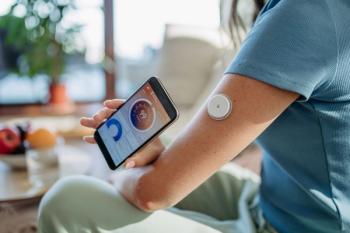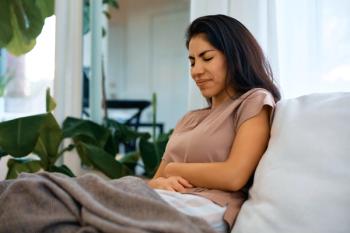
- Vol 70 No. 1
- Volume 70
- Issue 1
Elagolix with add-back therapy found effective and tolerable for endometriosis pain
In a recent study, endometriosis-associated pain was reduced among patients taking elagolix, with bone mineral density mitigated using add-back therapy.
Dysmenorrhea (DYS), nonmenstrual pelvic pain (NMPP), and fatigue are significantly improved by elagolix (ELA) with add-back (AB) therapy in patients with endometriosis, according to a recent study published in the American Journal of Obstetrics & Gynecology.1
Approximately 10% of women worldwide are impacted by endometriosis, an inflammatory disease linked to pain and infertility. Patients with endometriosis often experience DYS, NMPP, dyspareunia (DYSP), and fatigue.
Moderate-to-severe endometriosis may be treated using ELA, an oral antagonist designed to be taken at either 150 mg once daily or 200 mg twice daily, described as low-dose therapy and high-dose therapy, respectively.
High-dose therapy has been linked to hypoestrogenic effects such as reduced bone mineral density (BMD), making the approved treatment duration limited to 6 months.2 However, these hypoestrogenic effects may be mitigated through hormonal AB therapy.1
Investigators conducted a study to evaluate the safety and efficacy of ELA 200 mg twice daily plus AB (ELA+AB) in endometriosis patients. The analysis was of an ongoing phase 3, 48-month trial evaluating the regimen’s efficacy, tolerability, and impact on BMD.
Participants included women aged 18 to 49 years reporting moderate-to-severe endometriosis-associated pain within 35 days before baseline. A surgical diagnosis of endometriosis within 10 years before screening was also necessary for inclusion.
These participants were randomized 4:1:2 to receive ELA+AB therapy, 6 months of ELA 200 mg twice daily monotherapy followed by 6 months of ELA+AB therapy, or placebo, respectively. In the monotherapy group, BMD changes were compared following ELA monotherapy vs ELA+AB therapy.
Individuals with chronic pelvic pain, systemic corticosteroid use before screening, depression history or post-traumatic stress disorder diagnosis, bone disease, clinically significant medical conditions, or conditions contraindicated for AB therapy use were excluded from the analysis.
Daily DYS and NMPP assessments at month 6 were recorded as the coprimary efficacy endpoints. These symptoms were measures using the 4-point Endometriosis Daily Pain Impact Diary. Secondary efficacy endpoints included changes in DYS and NMPP at months 12, 6 and 4, fatigue, DYSP and overall endometriosis-associated pain within the past 7 days.
Treatment-emergent adverse events were reported to determine tolerability. Additionally, BMD comparisons were conducted including lumbar spine, total hip, and femoral neck assessments.
There were 681 patients randomized, with 44% discontinuing the study drug. TEAEs were reported as the most common reason for discontinuation, followed by withdrawal of consent, lost to follow-up, and other. Participants were aged a mean 32.5 years, and similar DYS, NMPP, DYSP, overall pain, and fatigue scores were reported between groups at baseline.
The ELA+AB therapy group reported significantly improved DYS and NMPP at 6 months compared to the placebo group. Responder rates for DYS were 62.8% for ELA+AB therapy vs 23.7% for placebo. For NMPP, these rates were 51.3% vs 36.8%, respectively.
An increased clinical response was also reported for DYS at 12 months in the ELA+AB therapy group vs the placebo group, at 63.8% vs 29.1%. Similarly, NMPP response rates at 12 months were 54.3% vs 42.3%, respectively. Additional improvements found from ELA+AB therapy vs placebo included DYS and NMPP at months 12, 6, and 3, and fatigue at 6 months.
TEAEs were reported in 73.8% of patients receiving ELA+AB vs 66.8% of those receiving placebo. There were no significant differences in rates of severe TEAEs between groups, and rates of TAEs leading to discontinuation were 12.6% vs 9.8%, respectively. Hot flushes, nausea, and headache were the most common TEAEs in the ELA+AB group.
Alongside the placebo group, patients in the ELA+AB therapy group had a change in BMD from baseline to month 6 and month 12 under 1%. At month 6, a statistically significant difference in mean lumbar spine changes of -0.83% was reported in the ELA+AB therapy groups vs the placebo group, but differences in total hip and femoral neck were not statistically significant.
These results indicated significant improvements in endometriosis-associated pain up to 12 months with attenuated BMD loss from ELA+AB therapy vs ELA monotherapy at 6 months. Investigators concluded ELA+AB therapy is tolerated after 12 months of treatment.
References
- Miller CE, Kim JH, Kroll R, et al. Efficacy, tolerability, and bone density outcomes of elagolix with add-back therapy for endometriosis-associated pain: twelve months of an ongoing randomized phase 3 trial. Am J Obstet Gynecol. 2024;231:630.e1-13. doi:10.1016/j.ajog.2024.06.040
- Taylor HS, Giudice LC, Lessey BA, et al. Treatment of endometriosis-associated pain with elagolix, an oral GnRH antagonist. N Engl J Med. 2017;377(1):28-40. doi:10.1056/NEJMoa1700089
Articles in this issue
8 months ago
Your Voice: Not the ending I had imagined10 months ago
From data to wisdom10 months ago
Deep dive into fetal ventriculomegalyNewsletter
Get the latest clinical updates, case studies, and expert commentary in obstetric and gynecologic care. Sign up now to stay informed.











